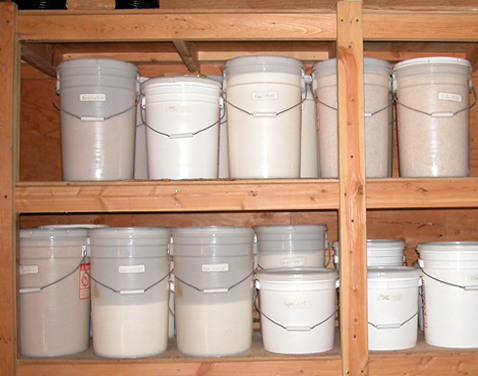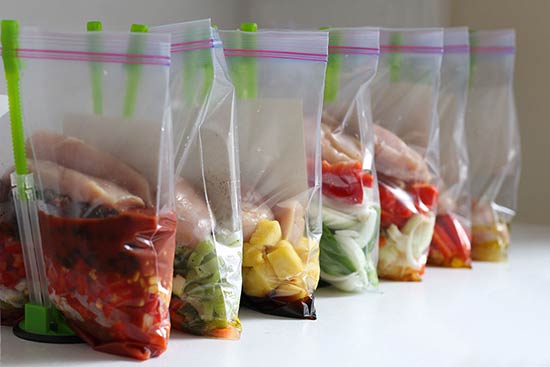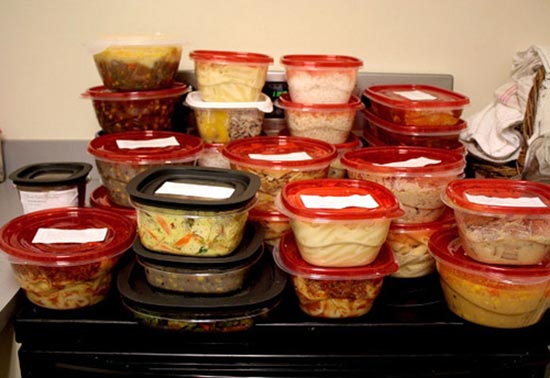Avoid Making These Common Food Storage Mistakes
Make sure to like Living Green and Frugally on Facebook, Shop at Amazon to help support my site and explore our PINTEREST BOARDS for innovative ways you can become self-sufficient.
It seems everywhere you look lately, people are talking about food storage. Common food storage for most Americans is about a week’s worth of food. For the self-reliant types though, common food storage means something else entirely. A week’s worth of food is what they tend to have in their cars for emergencies!
So many people believe that they can just buy a bunch of food, stick it in a closet, and call it good. This couldn’t be further from the truth! A well stocked pantry is a living thing that needs to be rotated, cared for, and looked after. You need to make sure the 5 food enemies are minimized as much as possible. You need to ensure the conditions for storage will give you the maximum shelf life on the investment you’ve made. If your food storage area has big temperature swings each day, you are risking the shelf life of what you’ve stored.
Though the article covers some of the very basic rules, it dives deeper than just reminding you to not “stock food you don’t enjoy.” Just because something is on sale doesn’t mean you should buy and stock it. Especially if you don’t eat it! Consider the importance of ‘comfort food’ in a disaster situation. If it’s been a week and you are used to having a diet soda each day, imagine how you’d feel if someone handed you your favorite brand? Common food storage mistakes don’t have to be common. Learn what they are and how to avoid them below!
Proper food storage is essential for maintaining food quality, safety, and minimizing waste. However, even the most diligent of us can make mistakes that lead to spoiled food or potential health hazards. Here are 15 common food storage mistakes to avoid, along with explanations on why they matter.
1. Not Rotating Out of Date Food Items
Why It Matters: Failing to rotate food items ensures that older products are used first, leading to spoiled food and increased waste. Always practice the “first in, first out” (FIFO) method to keep your pantry fresh.
2. Storing Food at Incorrect Temperatures
Why It Matters: Perishable items should be stored at specific temperatures to prevent bacterial growth. Refrigerators should be kept at or below 40°F (4°C) and freezers at 0°F (-18°C). Improper temperatures can lead to foodborne illnesses.
3. Leaving Food Uncovered
Why It Matters: Uncovered food is susceptible to contamination from other foods, pests, and bacteria. Use airtight containers or covers to keep food safe and fresh longer.
4. Overpacking the Refrigerator
Why It Matters: Overpacking restricts air circulation, causing uneven cooling and potential spoilage. Keep your fridge organized and not overly full to maintain consistent temperatures.
5. Ignoring Expiration Dates
Why It Matters: Expiration dates are guidelines for food safety and quality. Consuming expired products can lead to health risks. Regularly check and dispose of expired items.

6. Not Labeling Stored Food
Why It Matters: Without labels, it’s easy to forget when food was stored. Label containers with the date of storage to keep track of freshness and avoid eating spoiled food.
7. Using the Wrong Containers
Why It Matters: Certain foods require specific containers to maintain their quality. Use airtight, moisture-resistant containers for dry goods and leak-proof containers for liquids to prevent contamination and spoilage.
8. Storing Fresh Produce in Plastic Bags
Why It Matters: Plastic bags can trap moisture and cause produce to spoil faster. Use breathable produce bags or store items like lettuce and herbs in a container with a paper towel to absorb excess moisture.
9. Not Cleaning Storage Areas
Why It Matters: Dirty storage areas can harbor bacteria, mold, and pests. Regularly clean your pantry, fridge, and cabinets to maintain a hygienic environment for your food.
10. Freezing Foods Incorrectly
Why It Matters: Improper freezing can lead to freezer burn and loss of food quality. Ensure foods are properly wrapped or stored in airtight containers before freezing.
11. Refreezing Thawed Foods
Why It Matters: Once food has been thawed, refreezing it can cause loss of texture and flavor, and increase the risk of bacterial growth. Plan portions accordingly and avoid refreezing.
12. Not Ventilating Stored Foods
Why It Matters: Some foods, like potatoes and onions, need proper ventilation to prevent mold and spoilage. Store them in a cool, dark place with good air circulation.
13. Placing Hot Foods Directly in the Fridge
Why It Matters: Placing hot foods in the fridge can raise the internal temperature, promoting bacterial growth. Allow hot foods to cool to room temperature before refrigerating.

14. Not Storing Foods in Their Ideal Environment
Why It Matters: Different foods require different storage conditions. For example, tomatoes should not be refrigerated as they lose flavor, while bread can go stale faster in the fridge. Research and follow best practices for each type of food.
15. Using Food Storage Containers That Aren’t Food Safe
Why It Matters: Non-food-safe containers can leach harmful chemicals into your food. Always use containers labeled as food-safe, especially for long-term storage.
Avoiding these common food storage mistakes can help you maintain the quality and safety of your food, reduce waste, and ultimately save money. By implementing these best practices, you can ensure that your kitchen remains a safe and efficient place for meal preparation and food consumption.
